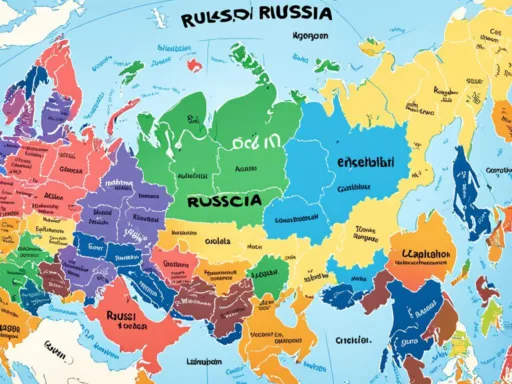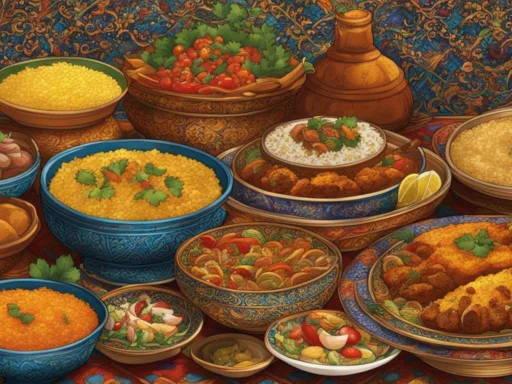In the mountainous heart of Central Asia, a staggering 70% of Tajikistan‘s population is under 30, a demographic ripe for shaping the future linguistic landscape of this diverse nation. This youthful majority is a bridge between tradition and modernity, conversing in a rich tapestry of tongues that underscore Tajikistan’s linguistic diversity. Within its borders, languages aren’t just modes of communication but living relics of the country’s storied past and vibrant cultural mosaic.
Far from the monolingual realms, languages spoken in Tajikistan encompass a vivid palette of dialects and mother tongues. From the bustling bazaars of Dushanbe to the windswept Pamir Mountains, voices rise in a variety of languages – a testament to the country’s history as a crossroads of empires and ethnicities. It’s a place where the echoes of Persia mingle with the diction of the Soviet legacy, creating an unparalleled blend of linguistic influences.
Key Takeaways
- The youthful population of Tajikistan is poised to influence the continuation and evolution of the country’s linguistic heritage.
- Tajik, the state language, reflects the nation’s Persian cultural roots and remains a cornerstone of national identity.
- With a remarkable degree of language diversity, Tajikistan provides a fascinating case study in linguistic plurality and interethnic communication.
- Russian continues to play a vital role in Tajik society, illustrating the lasting impact of Tajikistan’s historical narratives.
- Tajikistan serves as an example of how indigenous and minority languages contribute to the rich linguistic fabric of a nation.
The Linguistic Landscape of Tajikistan
Tajikistan, a nation celebrated for its language diversity, presents a fascinating blend of languages that mirror its historical depths and cultural richness. At the heart of this linguistic mosaic, Persian Tajik stands as the Tajikistan official language, uniting the country under a common linguistic heritage. Furthermore, Russian emerges as a vital language of interethnic dialogue, reinforcing the bond between Tajikistan and its historical affiliations with Russia.
The inclusion of these languages within the Tajikistan constitution underscores their significance in not only the nation’s past but also its evolving present. Beyond these official tongues, a variety of indigenous and minority languages add to the tapestry that is Tajikistan’s linguistic identity.
- Aimaqi and Parya, indigenous languages with deep-seated roots in the region’s culture and history.
- Belarusian and Ukrainian, representing the linguistic threads of minority groups that reside within the country.
- English and Mandarin Chinese, languages of international importance, reflecting the broadening scope of global interaction.
This culmination of different dialects and languages embodies the essence of language diversity Tajikistan celebrates, painting a vivid portrait of a society that’s both diverse and inclusive. It’s this very pluralism that paves the way for a more dynamic and harmonious cultural landscape. As the people of Tajikistan navigate their daily lives, their linguistic choices act as a bridge connecting the past to the present and opening doors to a globally engaged future.
Languages Spoken Tajikistan
The rich tapestry of languages in Tajikistan is an essential component of the nation’s diverse cultural heritage. At the heart of this linguistic diversity is the Tajik language, an offshoot of the Persian language prevalent within Tajikistan. Alongside Tajik, the Russian language in Tajikistan also plays a crucial role, facilitating communication between various ethnic groups. The phenomenon of multilingualism in Tajikistan is particularly evident in vibrant urban centers like Samarkand and Bukhara.
Understanding Tajik, the State Language
Tajik, the state language of Tajikistan, draws its essence from the Persian language family. Written in a unique Tajik Cyrillic alphabet, it forms the backbone for official and cultural exchanges throughout the region. The language’s affinity with Persian allows for an interconnectivity with speakers in Iran and Dari speakers in Afghanistan, attributing to its wider regional significance.
Russian: A Legacy of Interethnic Communication
Russian language retains its significant presence in Tajikistan, largely due to the historical association between the two countries. As the linguistic conduit for interethnic discourse, Russian is spoken with varying fluency by a substantial portion of the population, ingraining itself into Tajikistan’s societal fabric.
Multilingualism in Major Cities: Samarkand and Bukhara
The cities of Samarkand and Bukhara epitomize the multilingual landscape of Tajikistan. Their strategic locales have fostered bilingualism, especially with the Uzbek language, among native Tajik speakers. These historical crossroads showcase the dynamic interplay of languages reflecting the overall multilingualism prevalent in Tajikistan’s urban centers.

The table below illustrates the linguistic environment in Tajikistan’s major cities, highlighting the prominence of Tajik and Russian, as well as the influence of other regional languages:
| City | Main Languages | Notable Features |
|---|---|---|
| Dushanbe | Tajik, Russian | Capital city with significant governmental and cultural institutions using Tajik; Russian used in business and interethnic communications. |
| Samarkand | Tajik, Uzbek, Russian | A historical center with a rich heritage of Tajik-Uzbek bilingualism; Russian facilitates interethnic communication. |
| Bukhara | Tajik, Uzbek, Russian | Renowned for its multicultural past, with Tajik and Uzbek languages deeply embedded in the city’s culture; Russian serves as a lingua franca among ethnic groups. |
Tajikistan’s Official Languages
Within the borders of Tajikistan, a symphony of languages echoes through the valleys and cities, but among them, the Tajikistan official languages hold a place of prominence in the nation’s constitution and cultural identity. Persian Tajik, the variant of Persian spoken in Tajikistan, stands as the state language, characterized by its Cyrillic script—a lasting imprint from historic language reforms.
The harmonious blending of this Persian dialect with the region’s linguistic traditions signifies not only a sense of national unity but also reflects the enduring ties to its Persianate heritage. Meanwhile, Russian has been preserved as a language for international communication, symbolizing the intricate dance between maintaining a distinctive cultural identity and embracing a multifaceted historical legacy that includes Soviet influences.
Preservation of these languages is indicative of Tajikistan’s commitment to heritage, while also representing a bridge between the past and the contemporary global stage. Let’s delve deeper into the characteristics of these languages:

| Tajik (Persian Tajik) | Russian |
|---|---|
| Official state language | Language for international communication |
| Written in Tajik Cyrillic script | Written in Russian Cyrillic script |
| Related to Persian and Dari | Part of the East Slavic language group |
| Integral to national identity | Reflects historical Soviet ties |
The role of these official languages is multifaceted, serving as tools for education, governance, and media—a testimony to their entrenched position in Tajik society. Upholding Persian Tajik not only strengthens the cultural bonds among Tajiks but also offers a linguistic passport connecting them with wider Persian-speaking communities.
Minority Languages and Dialects in Tajikistan
Linguistic diversity in Tajikistan is markedly rich, with an array of minority languages that are indispensable to cultural identity and heritage. These languages range from the widely spoken Uzbek language to the more isolated and intriguing Pamir languages of remote mountain communities, and the historical Bukhori dialect of the Bukharian Jews.

Uzbek: A Significant Minority Language
The Uzbek language in Tajikistan has established itself as a prevailing linguistic thread within the country’s cultural fabric. Predominantly used in the northern and western regions, it symbolizes the depth of linguistic interconnectivity among various ethnic groups. The substantial numbers of Uzbek-speaking residents contribute to the dynamic tapestry of language diversity Tajikistan is known for.
The Rural Linguistic Mosaic: Pamir Languages
Nestled in Tajikistan’s mountainous terrains, especially the autonomous region of Gorno-Badakhshan, the Pamir languages Tajikistan harbors are living examples of linguistic resilience. These languages encapsulate a unique cultural identity and play a critical role in maintaining the diverse soundscape of the nation. Efforts to preserve these minority languages highlight the challenges faced in keeping such dialects alive amidst modernizing influences.
Cultural Insights: The Language of the Bukharian Jews
The Bukhori language, with its intricate blend of Tajik and Hebrew elements, remains a testimony to the multicultural past of Tajikistan. The language, predominantly spoken by the Bukharian Jewish community, resonates with the historical nuances of past generations and the linguistic adaptability of the region. The use of the Hebrew alphabet in its written form underscores the distinctive identity of the Bukhori dialect amidst the broader landscape of language diversity Tajikistan offers.
Language Diversity Tajikistan: The Influence of Neighbors
The rich tapestry of language diversity Tajikistan showcases is a reverberation of the region’s diverse history, with substantial linguistic influence from Central Asia. Neighboring nations have left an indelible mark on Tajikistan’s languages, fostering a multicultural dialogue that transcends national borders. A look into the country’s lingual synergies reveals the depth of these cross-cultural exchanges.
The undeniable presence of Uzbek words within Tajik dialects highlights the intricate relationship between Tajikistan and Uzbekistan. Such linguistic interplays are not solely a product of modern-day interactions but are the cumulative effect of centuries of shared history, trade, and familial ties. The Uzbek language, in particular, has permeated several layers of Tajik society, intertwined so deeply that it often goes unnoticed in everyday conversation.
In addition to Uzbek, the echoes of other neighboring languages, including Kyrgyz and Turkmen, occasionally ripple through Tajikistan’s linguistic spectrum, making it a veritable hotspot for language diversity in Central Asia. The following table illustrates how Tajikistan’s dialogic character is augmented by its neighbors:
| Neighbor | Influence on Tajik Dialects | Cultural Exchange |
|---|---|---|
| Uzbekistan | Lexical borrowing, similar grammar structures | Shared traditions and historical commerce |
| Kyrgyzstan | Nomadic terminologies, folklore influences | Migration and intermarriage |
| Turkmenistan | Culinary vocabulary, clothing terms | Artisanal exchanges and shared artistry |
The blending of languages in Tajikistan serves as a testament to the nation’s ability to incorporate and adapt linguistic elements from those they share their land and history with, ultimately strengthening their own diverse tapestry of language and culture. Truly, the influence of Central Asian neighbors on language diversity Tajikistan enjoys today cannot be overstated, and it continues to be a dynamic, evolving phenomenon.
The Role of Foreign Languages in Tajikistan
In Tajikistan, the crossroads of cultures is not just a metaphor; it’s a linguistic reality. Among the tapestry of tongues that flourish here, the inclusion of foreign languages in Tajikistan signifies the country’s openings to global dialogue and development. Notably, the English language in Tajikistan stands as a bridge connecting Tajik youth and professionals to the wider world, particularly within the realms of education and tourism.
While English may be the frontrunner in this linguistic expansion, other European tongues follow suit. German and French, akin to choosy vines climbing the walls of international communications, have found their niche. Conversely, languages like Turkish and Mandarin Chinese point to the direction of new economic horizons, echoing the beats of trade and interstate relations.
| Language | Taught In | Use In Industry | Popularity Among |
|---|---|---|---|
| English | Schools, Universities | Tourism, Business | Youth, Professionals |
| German | Language Centers, Schools | Engineering, Science | Students, Academics |
| French | Speciality Programs, Private Tutors | Diplomacy, Culture | Linguists, Enthusiasts |
| Turkish | Cultural Institutes | Commerce, Construction | Businesspeople, Traders |
| Mandarin Chinese | Confucius Institutes, Private Lessons | Manufacturing, Tech | Entrepreneurs, Scholars |
The upsurge of English as a notable foreign language in Tajikistan is not without its showcases. Spotted among the bustling marketplaces and serene mountain vistas are the informed guides, traders fluent in not just the transactional dialect but also in hospitality, conveying warmth and narratives in impeccably articulated English. It’s this fusion of tradition with a global lexicon that hints at the subtle, yet distinct shift in Tajikistan’s societal fabric.
As the conduits of culture and commerce further emulsify, one can envision a future where Tajikistan’s linguistic repertoire—known for its steadfast homage to heritage—becomes a cosmopolitan blend of local idioms and global patois. Thus, foreign languages in Tajikistan are not merely subjects within classroom walls but are lively scripts in the country’s unfolding narrative.
Education and Language Preservation
In the heart of Central Asia, Tajikistan is making strides in the domain of language education and the efforts to safeguard its rich linguistic palette are a testament to the nation’s commitment to cultural heritage. This educational strategy not only melds tradition with modernity but also ensures the linguistic tapestry continues to thrive amidst globalization. With the guidance of the educational system, the country is navigating through the intricacies of language revitalization.
Language Curriculum in Schools
The language curriculum within Tajikistani schools is a finely woven fabric comprising Tajik, the cherished state language, and Russian, a bridge for interethnic dialogue. This dual linguistic focus is bolstered by the inclusion of foreign languages, with English carving out a significant niche. Such a system prepares the youth for a future where multilingual competencies are not just valued but are integral.
Language Revitalization Initiatives
Amidst the monumental peaks of the Pamirs, language revitalization initiatives breathe new life into minority languages. Led by organizations like the Aga Khan Foundation, these initiatives not only revive languages at risk of falling silent but also invigorate communities with a renewed sense of identity. By nurturing the roots of linguistic diversity, Tajikistan anchors its cultural legacy for generations to come.
Linguistic Rights and Policies
In the realm of linguistic rights Tajikistan stands as a commendable example with its constitution ardently defending language diversity within its borders. The Tajikistan constitution language specifications not only fortify Tajik as the state language but also underscore the significance of Russian, heralding the nation’s ethos of maintaining cultural plurality.
Constitutional Provisions
The binding charter of Tajikistan illustrates a keen sensitivity to linguistic rights, with clear provisions enshrining the use and stature of both the state and recognized secondary languages. As a result, the Tajik language enjoys eminent position while Russian retains its role, reflecting a balance between national identity and historical ties.
Efforts Towards Language Equality
Striving for language equality Tajikistan has launched multiple policies and educational campaigns. These national endeavors are instrumental in the advancement of minority language instruction, aiming at boosting accessibility and fostering an inclusive society for all language communities.
Together, these efforts paint a portrait of a country that is not simply beholden to its linguistic past but is thoughtfully composing the stanzas of its future, one word at a time.
Conclusion
The exploration of Tajikistan’s language scene paints a vivid picture of a nation rich in linguistic diversity, something that is both a cornerstone of the country’s multifaceted identity and a vivid reflection of its complex history. The blend of languages – from the predominantly spoken Tajik to the substantial pockets of Russian, and the mosaic of minority languages – reaffirms Tajikistan’s status as a cultural crossroads in Central Asia. This linguistic identity is not merely a static heritage but a dynamic fabric continuously being woven by the threads of historical alliances, cultural exchanges, and the march of globalization.
Tajikistan’s Linguistic Identity
Tajikistan’s linguistic identity is a living tapestry spotlighting Persian influence, Soviet legacies, and the resilience of indigenous languages. The resilience and predominance of Tajik, along with the substantial use of Russian, authenticate the country’s linguistic narrative. This identity, deeply rooted in the very soil of Tajikistan, mirrors the nation’s soul, illustrating how language is more than a means of communication – it is the very essence of the collective consciousness of a people.
Looking Towards the Future of Language in Tajikistan
As the world becomes ever more interconnected, the future languages spoken in Tajikistan are set to reflect this convergence of local and global influences. The balancing act between preserving the rich tapestry of local dialects and embracing new linguistic currents will shape the educational reforms and language policies within Tajikistan. It is the adaptation to and integration of these influences that will chart the course for the country’s linguistic landscape, influencing the conversation between generations and between nations.






